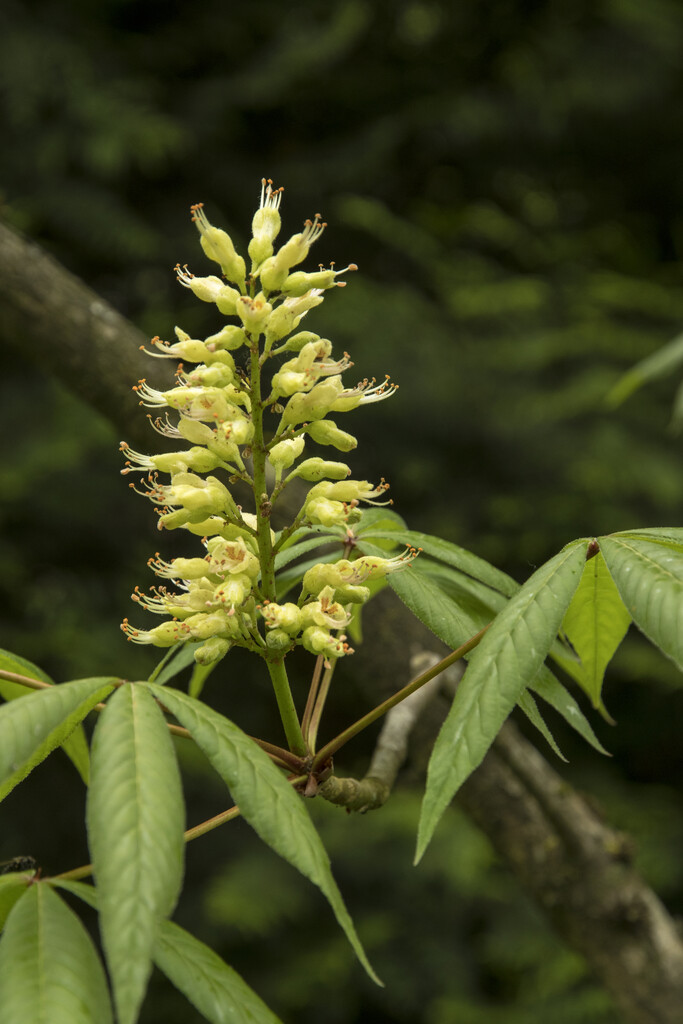Aesculus glabra
Ohio buckeye
A broadly conical tree to about 15m, with rough bark and shiny, green leaves palmately divided into five long, pointed leaflets, turning yellow to orange-red in autumn. The flowers, borne in late spring and early summer, are yellow-green, in upright, terminal spires, followed by knobbly, pale brown fruit.
Size
Ultimate height
Higher than 12 metresTime to ultimate height
20–50 yearsUltimate spread
Wider than 8 metresGrowing conditions
Moisture
Moist but well–drained, Well–drainedpH
Acid, Alkaline, NeutralColour & scent
| Stem | Flower | Foliage | Fruit | |
| Spring | Yellow Green | Green | ||
|---|---|---|---|---|
| Summer | Yellow Green | Green | ||
| Autumn | Yellow Orange Red | Brown | ||
| Winter |
Position
- Full sun
- Partial shade
Aspect
East–facing or South–facing or West–facing
Exposure
Exposed or Sheltered Hardiness
H7Botanical details
- Family
- Sapindaceae
- Native to GB / Ireland
- No
- Foliage
- Deciduous
- Habit
- Spreading branched
- Potentially harmful
- Humans/Pets (dogs): harmful if eaten. Wear gloves and other protective equipment when handling For further information and contact numbers regarding pets, see the HTA guide to potentially harmful plants
- Genus
Aesculus can be deciduous trees or large shrubs with showy flowers, palmately-lobed leaves and sometimes good autumn colour
- Name status
Correct
How to grow
Cultivation
Grows best in deep, fertile, moist but well-drained soil in sun or partial shade; only suitable for large gardens
Propagation
Propagate by seed
Suggested planting locations and garden types
- Architectural
- Cottage and informal garden
- Low Maintenance
Pruning
Pests
May be susceptible to horse chestnut leaf miner and horse chestnut scale
Diseases
May be susceptible to coral spot, canker, leaf spot and honey fungus
Get involved
The Royal Horticultural Society is the UK’s leading gardening charity. We aim to enrich everyone’s life through plants, and make the UK a greener and more beautiful place.
